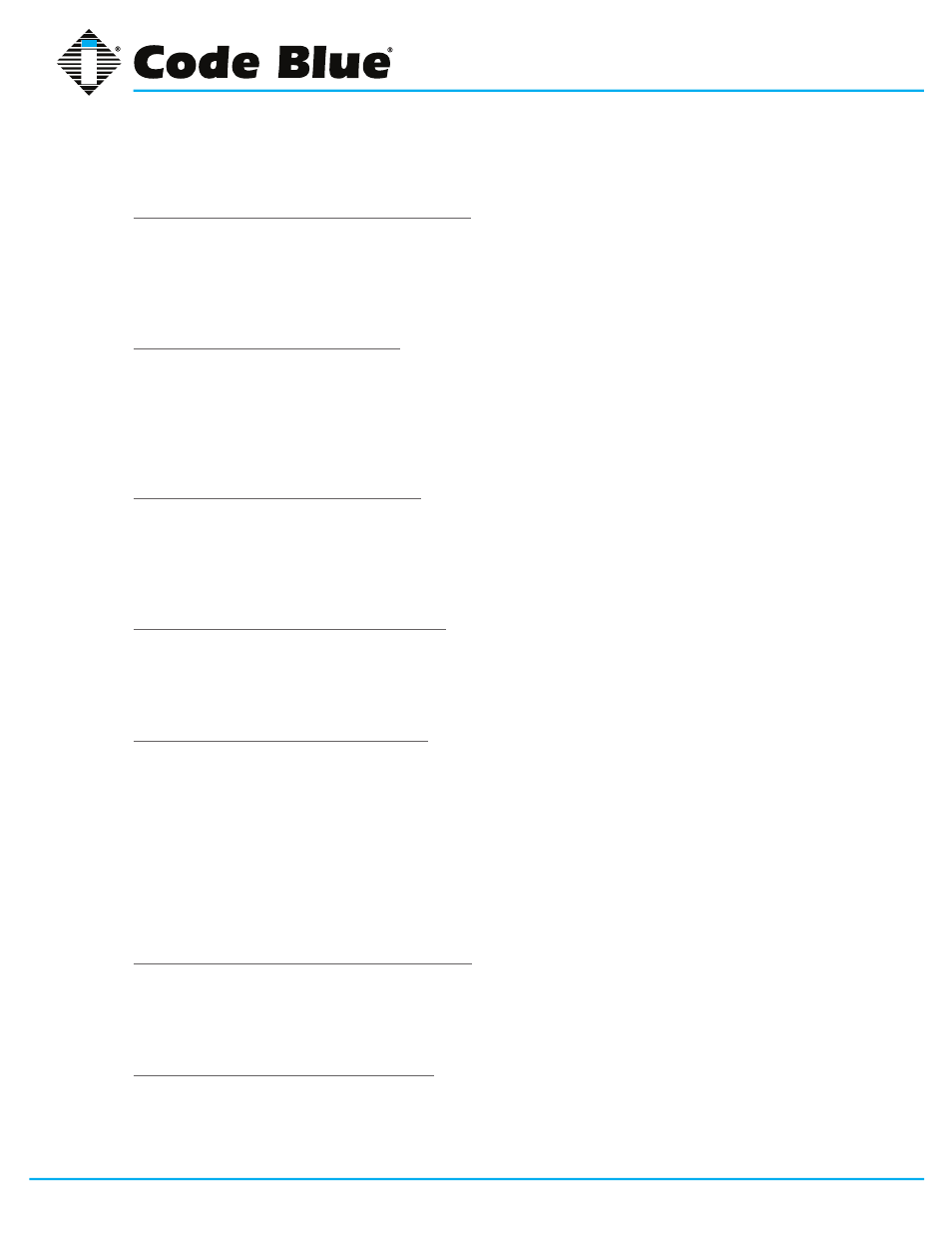Toolvox® x3, Administrator guide – Code Blue TOOLVOX X3 User Manual
Page 112

Code Blue
•
259 Hedcor Street
•
Holland, MI 49423 USA
•
800.205.7186
•
www.codeblue.com
GU-154-F
page 112 of 132
ToolVox® X3
Administrator Guide
impacts Canonical Mapping, Relocated Mapping and Virtual Domains.
Postfix support programs and daemons dir
This option specifies the directory where Postfix will look for its various support programs and
daemons. The directory should be owned by root. This option correlates to the program_directory
directive and defaults vary depending on installation method and OS variant. On many Linux
systems this will be /usr/libexec/postfix.
Relocated mapping lookup tables
Postfix can provide a relocation notice in response to messages sent to users who no longer receive
mail from this server. If enabled, this option specifies the location of the file containing a table of
contact information for users who no longer exist on this system. By default, this feature is disabled.
This option correlates to the relocated_maps directive. If enabled, a reasonable choice for this
option might be /etc/postfix/relocated.
Disable kernel file lock on mailboxes
On Sun workstations, kernel file locks can cause problems because the mailtool program holds
an exclusive lock whenever its window is open. Users of other OS variants, or Sun systems where
no Sun mail software is in use, may ignore this option. This option correlates to the sun_mailtool_
compatibility directive and defaults to No.
Max time to send a trigger to a daemon
This option specifies the maximum amount of time allowed to send a trigger to a Postfix daemon.
This limit helps prevent programs from getting hung up when the mail system is under an extremely
heavy load. This option correlates to the opts_trigger_timeout directive and defaults to 10 seconds.
Address Rewriting and Masquerading
Postfix offers a relatively easy to use and flexible address rewriting system, allowing it to act as a
mail gateway for a large network or as a gateway between legacy mail systems and the Internet at
large.
Note
The options on this page are also discussed on the
Postfix Configuration - Address
Manipulation
page at the Postfix homepage. It is worth reading if advanced address
rewriting is required in your mail system.
Rewrite “user%domain” to “user@domain”
This option is useful for some legacy systems that used strange address trickery, such as
user%domain@otherdomain. It is not generally useful in modern environments, but it is not harmful
so it usually defaults to Yes. This option correlates to the allow_percent_hack directive.
Rewrite “user” to “user@$mydomain”
This option configures how Postfix will handle an address that has no domain name in the
destination. If enabled, it will append the value of $mydomain to the address. This option correlates